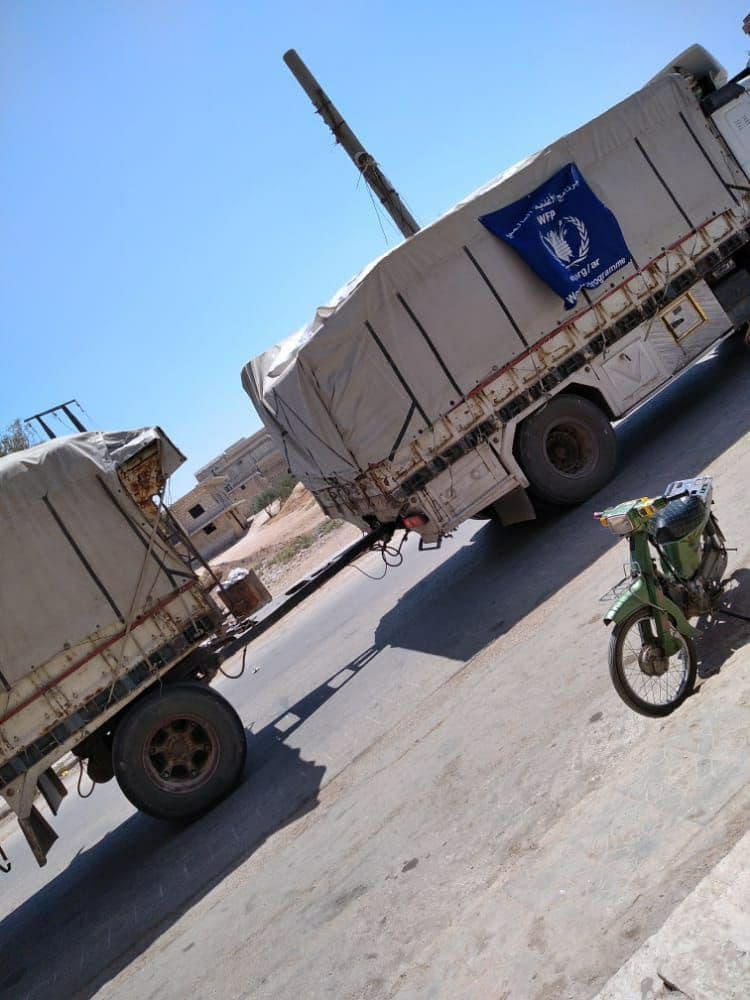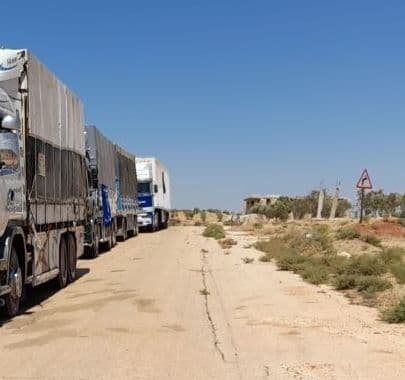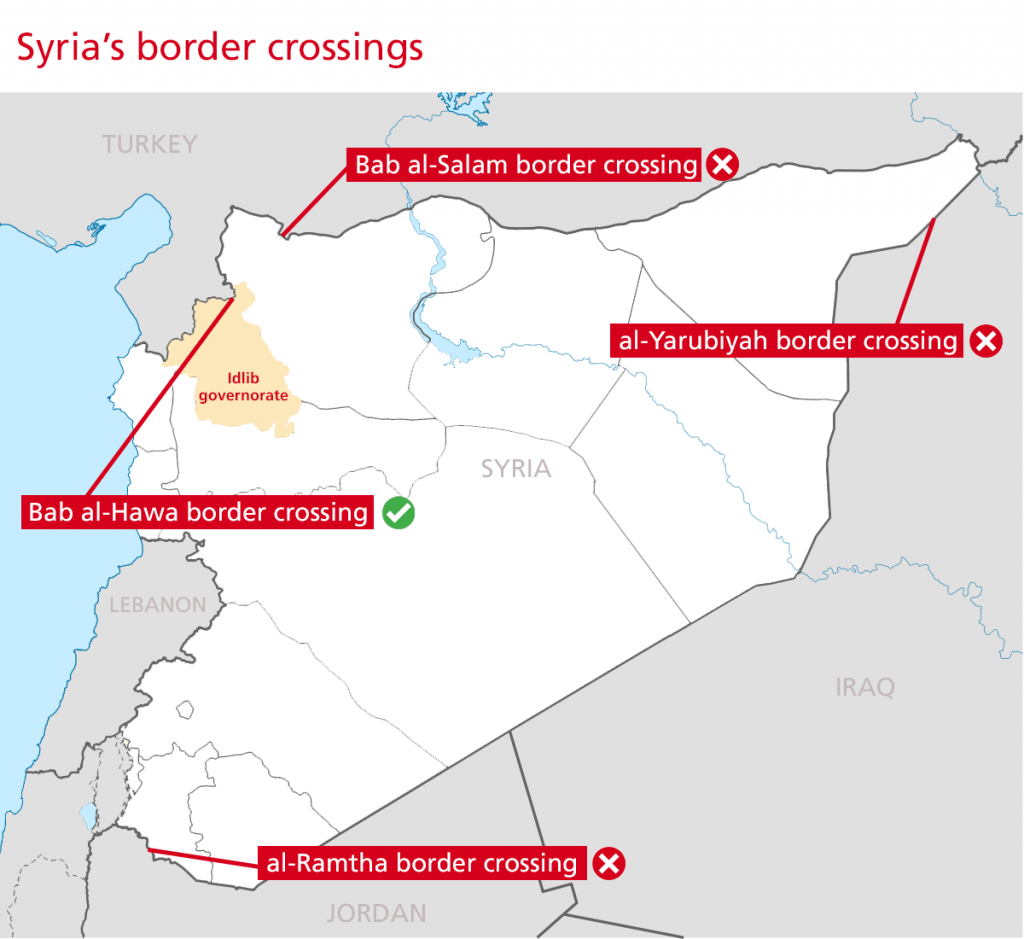
On Monday August 30th, an aid convoy consisting of 3 trucks transported the first batch of the World Food Program (WFP) as part of the total of 12 000 food baskets from warehouses in the regime held Aleppo province. The second batch of 12 trucks entered the liberated areas through the cross line border a day after. The shipments, which entered Idlib through the Miznaz front, were directly deposited to warehouses in the city of Sarmada, Idlib.
This is the first cross line aid convoy after the UN Security Council extended the cross-border humanitarian assistance through Bab al-Hawa on the 9th of July 2021. An extension period of 12 month was signed and agreed upon.
Originally, the Russians had insisted upon the aid being delivered through trucks accompanied by OCHA Damascus and the Syrian Arab Red Crescent and they were to enter through the town of Atarib from Aleppo. Then they would distribute the aid directly, in coordination with the local councils and without the involvement of local authorities. Upon completion the convoys would return to the regime held areas. However, this process would limit the Syrian Salvation Government’s ability to assess and effectively audit the process of aid distribution.
However, the Ministry of Development and Humanitarian Affairs of the SSG negotiated a new deal, in which the SSG would have complete control of the distribution of the UN aid coming from regime held areas. It also rejected the involvement of the Syrian Arab Red Crescent in this operation. The latter has been involved in foul-play in the past and is considered to be infiltrated by regime loyalists. The aid will be transported through contractors and intermediaries to reach the warehouses in Idlib. The Ministry of Development and Humanitarian Affairs confirmed the details of the deal in a statement which was released on the same day the aid arrived.

Russia aims to establish Damascus as the only major destination of international aid, from which it will then distribute it to the liberated areas, passing through front lines to reach the Idlib province. However, the SSG has refused the proposal of closing the Bab al-Hawa crossing and refuted handing the affairs of the displaced Syrian people over to the Syria Arab Red Crescent.
According to witnesses who confirmed to Syrians for Truth and Justice (STJ), the Syrian Arab Red Crescent has denied civilians access to assistance for having links with Syrian armed opposition groups. Other reports implicate that the SARC coordinates its activities with the notorious intelligence agencies of the regime.
The need for aid distribution in Syria originates from the UN Security Council meetings of 2014, where the global community was made to vote on the decision to enter aid to the rebel-held areas across the borders of neighboring countries as an exceptional measure. This resulted in a vote to approve the draft decision to introduce aid directly across the borders of Bab Al-Hawa and Bab Al-Salama, both crossing exist on the Turkish – Syrian border, the Al Yarubiyah border crossing of Syria – Iraq and the Ramtha border crossing of Jordan – Syria. The condition was however that an annual vote is held to renew the decision.

Since the implementation of direct aid distribution to north Syria, the sending of aid has become a highly contested topic with countries such as China and Russia vetoing the decision to provide aid through the existing routes 15 times over the course of the past 10 years.
The UN Security Council has been increasingly accommodating the Russian governments’ concerns, on the topic of renewal for the foreign border crossings of Syria, resulting in the Syrian government being the primary benefactor.
Starting in 2018, an additional crossing has been closed every year. In 2020 the Russian government succeeded in closing the Bab al-Salama crossing, leaving Bab al-Hawa crossing as the last active border.






